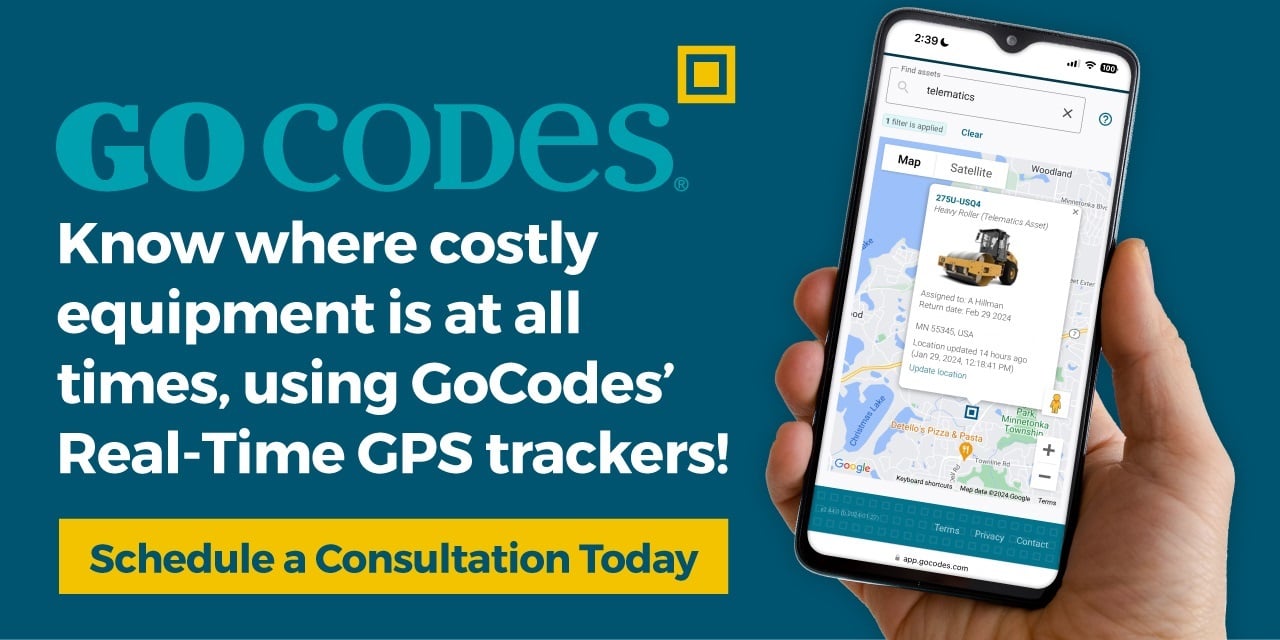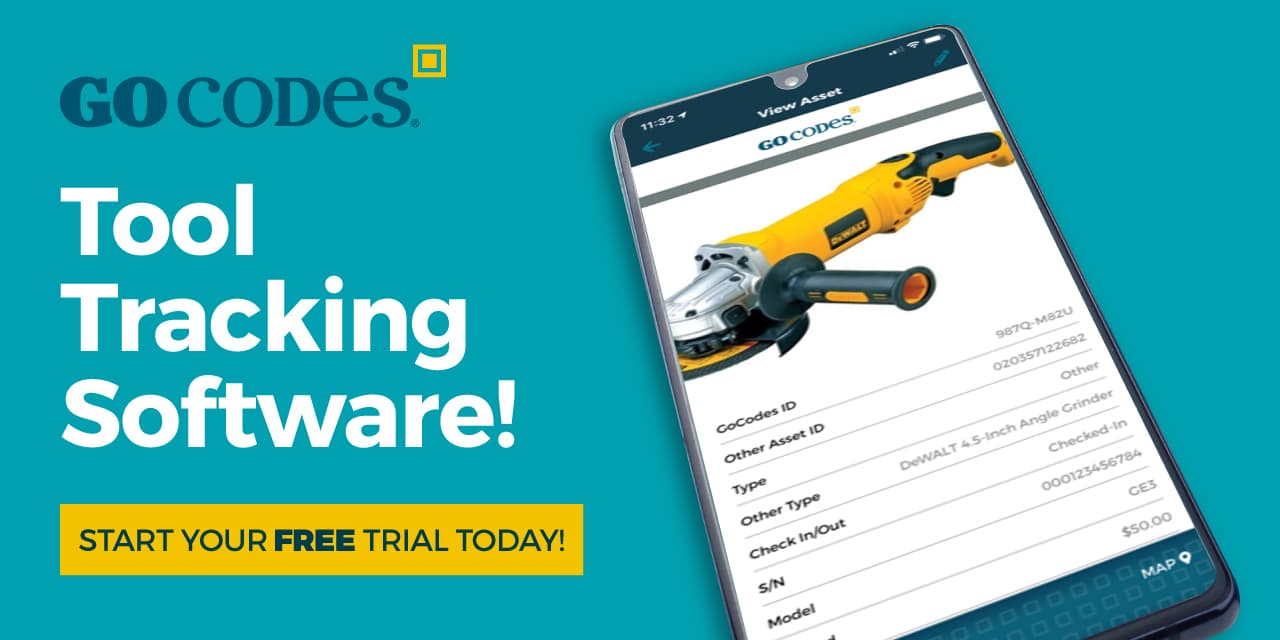When you think about asset management in construction, chances are your mind jumps straight to cranes, excavators, or other high-ticket machinery.
But it’s often the smaller tools, components, and materials that cause the biggest issues on a job site.
Why?
Because they’re easier to misplace, harder to track, and far more tempting targets for theft.
A missing bag of cement here, a few pipes there—it all adds up faster than you’d think.
That’s exactly why in this article, we’ll walk you through the top five solutions that don’t just keep your big assets in check, but also help you stay on top of the everyday tools and materials.
We’ll talk features, pros, cons, and of course, what it’s going to cost you.
In this article...
GoCodes Asset Tracking
Let’s start with our own solution.
GoCodes Asset Tracking is a cloud-based asset management software that helps construction professionals track and manage everything from heavy machinery to small tools and, of course, consumable inventory.
As such, it comes packed with all the features you could ever need, including:
| Fast check-in/check-out | Simply scan our rugged QR code tags with the Android app to instantly check assets in or out. |
| Document management | Upload and organize photos, manuals, warranties, invoices, and other key documents. |
| Custom reporting | Our built-in designer lets you create reports, charts, and dashboards so you can always view your data the way you want. |
| Offline mode | You can scan and update assets offline, and once you reconnect, your changes sync to the cloud. |
| Task management | Assign work orders, automate team reminders, and track task progress, documentation, and due dates with ease. |
When it comes to material management itself, GoCodes Asset Tracking makes everything simple.
Your assets are displayed in one easy-to-navigate dashboard, showing all the important details, from GPS location and assigned user to quantities, cost, procurement dates, and more.

Source: GoCodes Asset Tracking
These fields are highly customizable, too.
You can rename them, add drop-down menus, create new fields, and manage role-based access for your team.
Most importantly, you can set a minimum quantity or value for consumables, and the system automatically emails you when stock levels fall too low.
That way, you ensure you’re never understocked and avoid those costly project delays.
Updating stock levels is just as straightforward: scan the QR label with the app, and the database updates instantly.
The video below demonstrates how it all works in more detail.
Source: GoCodes Asset Tracking Tool Management Software on YouTube
As you can see, GoCodes Asset Tracking’ system is designed to be highly intuitive and user-friendly.
This makes it perfect for less tech-savvy workers and teams that just don’t want unnecessary complexity or confusing features.
As for the pricing, we offer five different plans, starting at $500 per year:
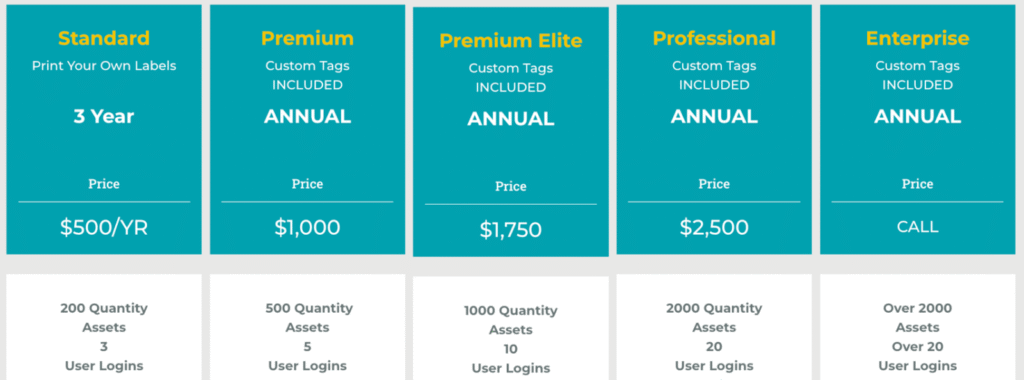
Source: GoCodes Asset Tracking
Plus, every subscription includes light-duty poly labels so you’re ready to go right out of the box.
That’s right, we provide both software and hardware!
And if you need something tougher, we’ve got you covered with durable options like anodized aluminum QR code tags as well as more advanced solutions like RFID/NFC, GPS, and Bluetooth tags.
So, if GoCodes Asset Tracking sounds like a fit for you, visit our website to learn more—or try GoCodes Asset Tracking free for 15 days and see the difference for yourself.
Clue
Clue is a cloud-based asset management platform that combines equipment, fleet, and materials management in one system, offering tools for:
- Reporting
- Asset utilization tracking
- Fleet and rental tracking
- Fuel management
- Maintenance planning
For materials specifically, it works much like GoCodes Asset Tracking.
You can see all your inventory in a clean, searchable table (shown below), get low-stock alerts, and access detailed usage histories and reports.

Source: Clue
There’s also a mobile app with an offline mode for managing everything on the go.
One difference is that Clue’s app doesn’t double as a barcode scanner. Instead, it works exclusively with GPS trackers.
The upside of this is that you get real-time inventory updates instead of having to wait for someone to scan a label and update it manually.
The trade-off is that GPS trackers required for the system to work are more expensive.
One strong advantage of Clue is that it lets you reorder materials directly through the platform.
That way, as soon as you’re notified of low stock, you can place an order without digging through scattered vendor lists, emails, or phone numbers.
Everything is handled in one place for maximum convenience.

Source: Clue
Overall, compared to some other solutions on this list, Clue is definitely on the more advanced and complex side.
This makes it a good fit for larger organizations with bigger asset portfolios.
However, that complexity also comes with a steeper learning curve, so teams with less technical experience may need extra training.
Now, the question is: how much does it cost?
Well, pricing isn’t published on their website and is only available on request, though reviews suggest it’s a significant investment.
What we do know is that, like GoCodes Asset Tracking, Clue provides both software and hardware.
Users can choose whether they want to use their own devices (Clue supports 20 different GPS systems) or purchase Clue’s trackers directly, like the one you see below:
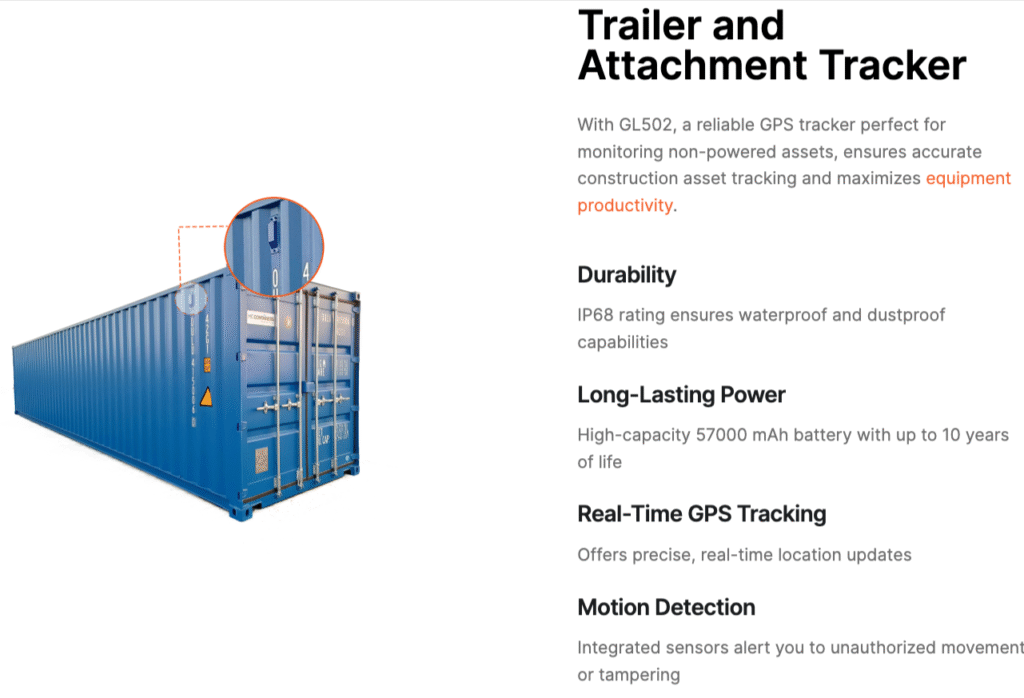
Source: Clue
Just remember, they only offer GPS trackers—no QR codes, RFID tags, or other options.
All things considered, Clue is best suited for larger teams with complex requirements, particularly organizations that need to manage not only materials but also fleets and rentals.
Smaller teams may find that the additional features add cost without delivering much benefit, but for the right business, Clue provides a powerful, all-in-one system.
If it sounds like a match for your needs, you can head to their website and request a free demo.
Sortly
Unlike the previous two solutions, Sortly is a cloud-based system designed specifically for inventory management.
It keeps things simple but effective, offering:
| Barcode or QR code tracking | Use an in-app scanner to check items in or out and update key details like quantity, location, cost, and more. |
| Custom fields | Track unique information that matters to your business and segment your items the way that makes the most sense for you. |
| Built-in purchase orders | Create POs right there in the system, using the inventory data you’re already tracking in Sortly. |
| Reporting | Access reports like inventory summaries, user activity reports, activity histories, etc. |
| Low-stock alerts | Get notified when you’re running low on certain materials. |
| Offline mobile access | Continue tracking and updating inventory even without an internet connection. |
One feature that really sets Sortly apart is its use of pick lists—something the other platforms don’t offer.
With them, you can pull together exactly the items needed for a job, complete with quantities, locations, and key details, and assign them directly to your team.
As items are picked, your inventory levels update automatically.
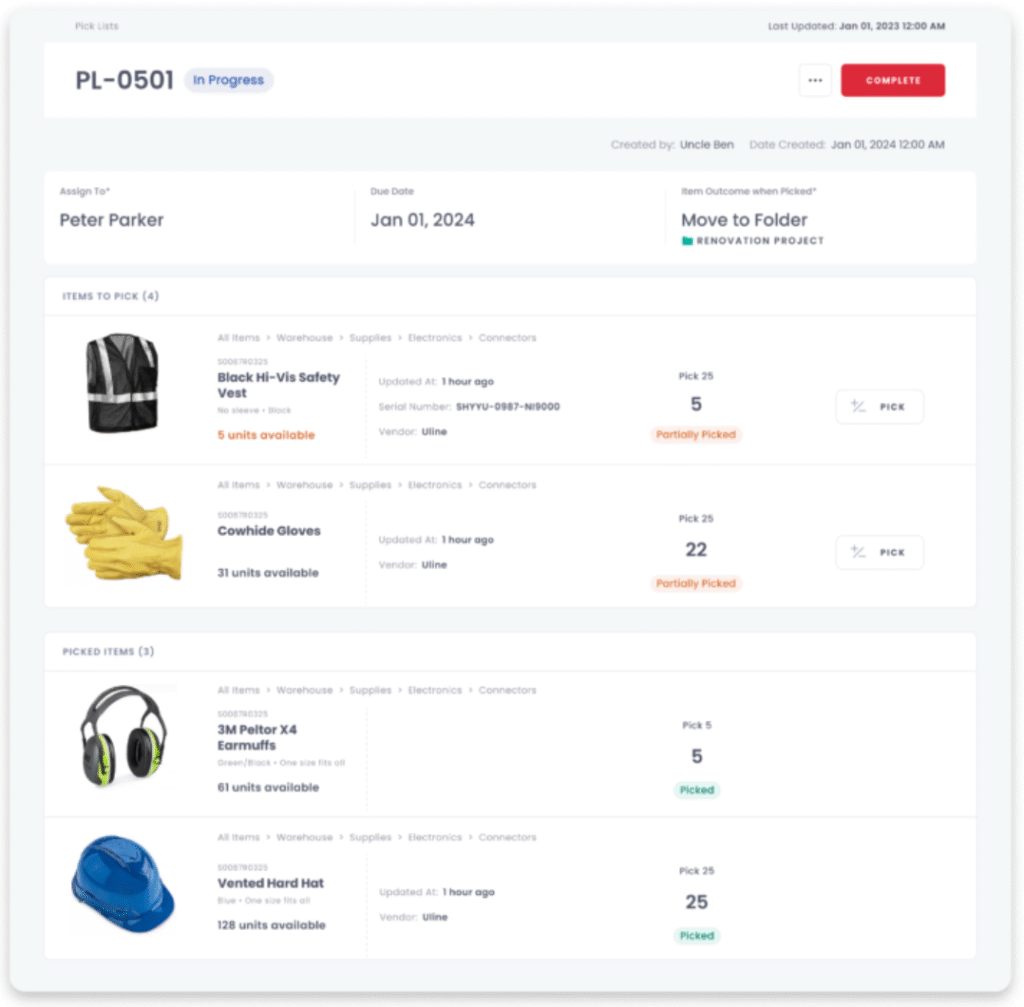
Source: Sortly
Pick lists are invaluable for job planning, ensuring teams grab exactly the right items in the right amount, every single time.
Sortly is also highly accessible when it comes to cost.
It offers five pricing plans, including a completely free option.
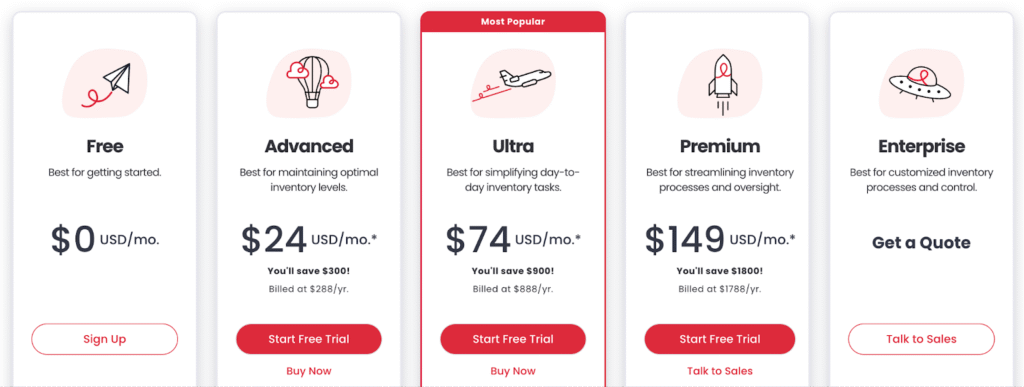
Source: Sortly
Unlike GoCodes Asset Tracking and Clue, Sortly doesn’t sell hardware, but it does enable you to print your own QR code labels.
This is convenient and affordable, though the durability of the labels depends on the quality of your own printing materials.
Overall, Sortly is appreciated for its clean, intuitive interface and highly visual design with photo capabilities—perfect for construction teams with varying levels of tech experience.
If you’re a smaller team that only needs an easy, reliable way to track materials without the complexity of full asset or fleet management, Sortly could be exactly what you’re looking for.
You can start with their free plan or test out a paid plan through a 14-day free trial to see if it works for you.
Vencru
Vencru is a cloud-based invoicing and inventory management software.
It comes with the following features:
| Invoicing and estimating | Create quotes, invoices, and receipts, track payments, and accept multi-currency payments, all in one place. |
| Purchase and vendor management | Simplify order management, vendor tracking, and shipping logistics with integrated purchase and inventory workflows. |
| Reporting and accounting | Get full visibility into your business finances with automated reports, budgeting tools, client statements, and audit tracking. |
For material management, Vencru provides everything you’d expect.
The mobile app supports both QR code and barcode scanning, making it easy to check items in and out, monitor stock levels, track locations, and review usage history.
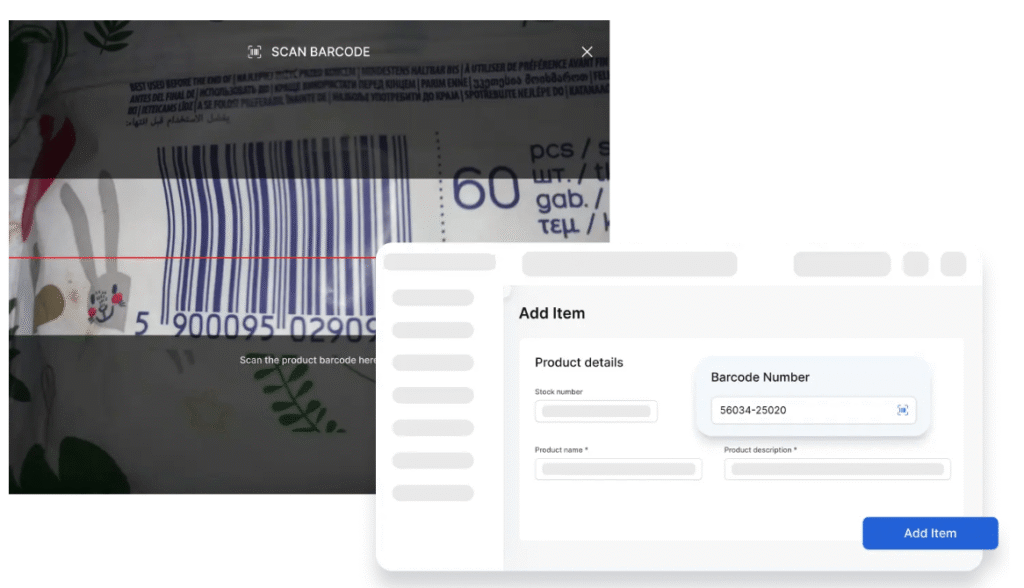
Source: Vencru
However, unlike the rest of the tools in this article, it doesn’t provide an offline mode.
The system also sends automatic notifications when stock levels are low or products are nearing expiration, helping you take timely action.
Because Vencru is not just inventory software but also an invoicing solution, it offers a unique advantage over the other options on this list.
It enables you to manage all your supplier invoices directly in the platform, creating professional bills in just a few clicks.
Inventory items can be linked with vendor invoices, speeding up the billing process and ensuring accuracy.
You can also track amounts owed, manage outstanding supplier payments, and avoid missed deadlines, all of which help maintain stronger vendor relationships:
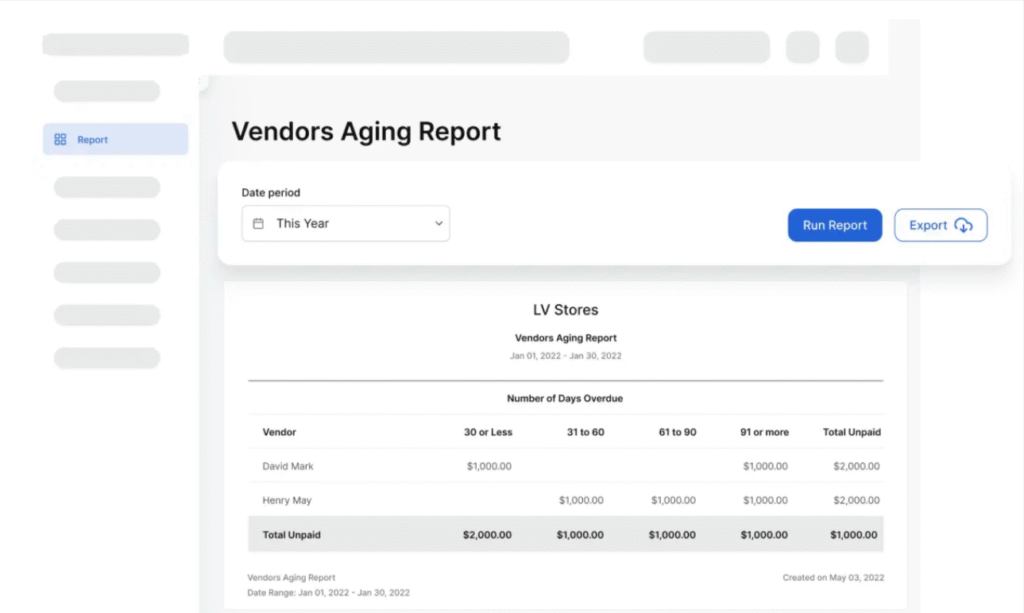
Source: Vencru
There is one limitation to note, however.
Much like Sortly, Vencru isn’t construction-specific. It was designed for wholesalers, retailers, along industries like construction.
It has features you probably won’t use—such as Shopify integrations—and lacks some features you might need, such as maintenance tracking.
When it comes to pricing, Vencru is one of the more affordable options.
It offers three paid plans starting at just $60 per year, as well as a free plan so you can try it before making any decisions.

Source: Vencru
Keep in mind that the software doesn’t come with hardware, so you’ll need to source your own QR code or barcode labels.
In any case, if your priority is simplicity in material management combined with invoicing and vendor management tools, Vencru could be a solution you’re looking for.
And with a 14-day free trial available for paid plans, it’s easy to explore whether it works for your business.
Tenna
Tenna is a cloud-based equipment management software built specifically for construction.
This solution features a wide range of products, including:
- Telematics
- Maintenance management
- Driver scorecards and coaching
- Asset management
- Dash cams
When it comes to materials management, Tenna’s capabilities are strong as well.
Like other solutions on this list, it lets you create detailed inventory lists with all the essential information—photos, UPCs, SKUs, specs, warranties, and more.
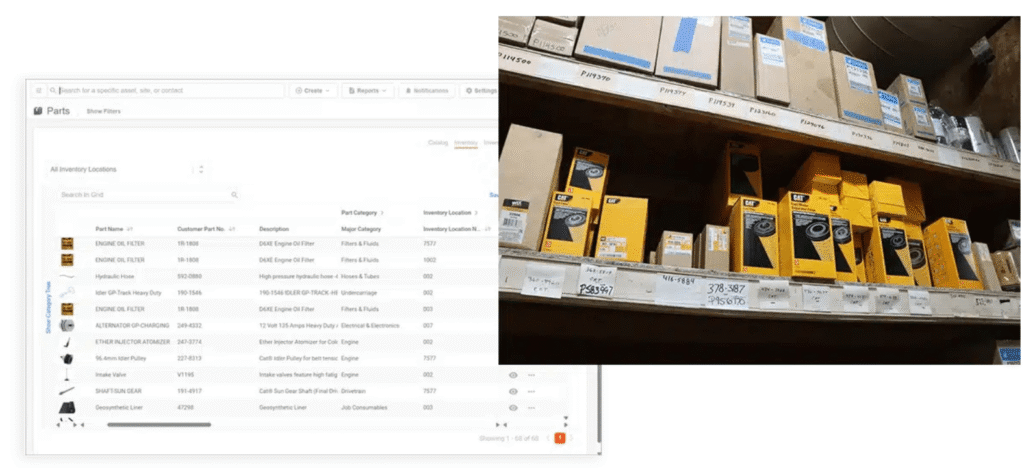
Source: Tenna
A built-in scanner app makes it easy to track and update asset data directly from the field, even if you’re offline.
Tenna also takes inventory tracking a step further by sending automated notifications not only when stock runs low but also when maximum levels are reached.
This helps prevent both shortages and overstocking, ensuring you always have the right amount of materials for every project.
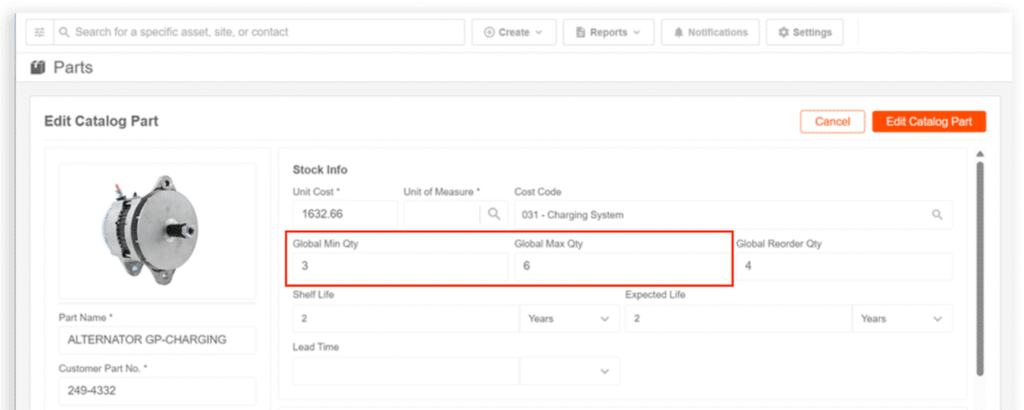
Source: Tenna
Inventory is fully integrated with work orders, so material and parts quantities are updated automatically as they’re used in real time.
This eliminates the need for manual adjustments that many other software require.
As for the pricing, Tenna doesn’t publish subscription details on its website, but it does sell hardware alongside the software.
Like with GoCodes Asset Tracking, you can choose from durable QR code labels, IoT devices, BLE or GPS trackers, so you can meet your specific project requirements and budget:

Source: Tenna
Since Tenna is built specifically for construction, it comes with all the features that any construction project manager could need.
In many ways, it’s similar to Clue, since it has a strong emphasis on fleet management.
All of this makes it a great fit for larger construction teams that need an advanced, all-in-one solution.
That said, it may feel like overkill for smaller crews who just want a straightforward tool to manage consumable inventory.
If you’re curious to see how it works, you can request a free demo directly from their website.
Conclusion
Now the ball is in your court.
Take the time to weigh these options against your specific needs before making a final choice.
Consider not just your budget, but also your bigger goals and priorities.
Do you need a straightforward solution your team can adopt quickly? Or are you looking for advanced features that give you more control and scalability?
Once you’ve narrowed it down, test the waters with free trials and demos.
They’re the best way to see how the software fits into your workflow.
And don’t forget to check out user reviews for real-world insights from teams who’ve already put these tools to the test.
Good luck finding the right fit for your projects!

